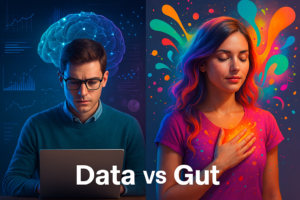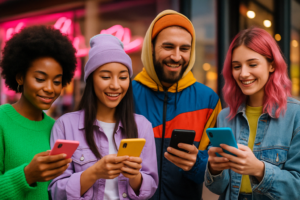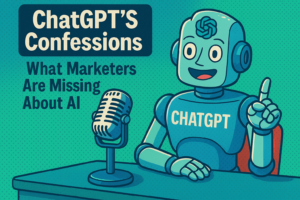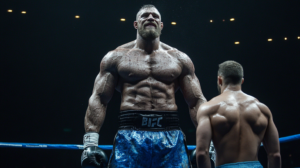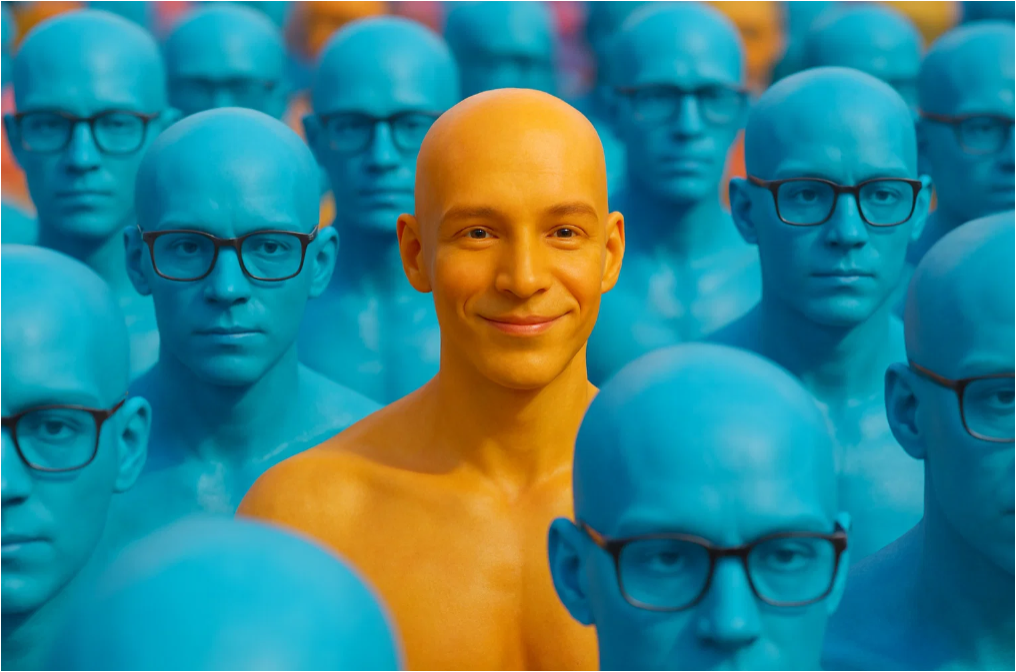
Scroll through any ad feed today, and you’ll see something odd — or, more precisely, you’ll notice that nothing is odd at all.Products blur. Messages echo. Visuals rhyme. Everybody is optimized. So everybody looks the same.
Welcome to the age of engineered sameness, where brands aren’t built— but rendered by templates. In an industry leveled by AI, controlled by metrics, and fixated on CTRs and CACs, there still exists an uncomfortable reality: If you can copy almost everything, then creativity is all that’s left.
When Optimization Becomes Imitation
Yes, marketing has been revolutionized by AI. We are now able to A/B test in real-time, scale creative automation, and produce content by the dozen. But optimization doesn’t favor originality. It rewards familiarity. Familiarity rewards repetition. And repetition kills distinctiveness.
The outcome? Everyone’s after the same performance patterns. Everyone’s pitching the same promise, packaged the same way, delivered in the same tired voice, fighting for attention in the same first three seconds.
It functions — until it doesn’t. Until your brand becomes invisible.
Functional benefits are a dead end.
For years, marketers believed that features and benefits would differentiate them. “Better ingredients”, Quicker delivery, “More sustainable”
But now? That’s just the price of entry.
Your 15g of protein, zero sugar! Great! So are yours, and so are yours, and so are a hundred like yours! Functional parity comes by nature. If you are not emotionally distinct, then you are not different altogether. The what no longer distinguishes you from others anymore. Only the how — voice, soul, story — can.
Creativity Isn’t The New Driver of Growth — It’s The One Left Standing
Creativity isn’t a new shiny strategy. It’s what remains when all the low-hanging fruit has been picked.
Performance marketing has become a commodity. Everybody optimizes. Everybody targets. Everybody reads from the same playbook. And that’s why genuine growth today hinges on something more difficult to replicate: originality of thought.
The winners among brands will not be those that become more optimized first. They’ll be those who think harder, are more courageous, and do what doesn’t “test well” on the first pass.
Here’s what it takes:
- Harness AI, but don’t lose your soul — Make machines scale, but human beings lead.
- Interrupt the feed — Not with trends, but with something that actually makes people feel.
- Rebuild creative culture — Creativity isn’t an end stage to strategy. It is strategy disguised.
Being creative isn’t something extra anymore. It’s the engine. It’s the edge. It’s a matter of being seen — versus being forgotten.
Final Thoughts: Creativity Is Something You Cannot Automate
You can outsource production, you can outsource targeting. But you can’t outsource your soul.
Creative ideas are not deliverables. It isn’t a department. It’s your brand’s perspective, ambition, and ethical compass — all wrapped up in a single entity. And in a sameness world, the only brands that matter are the ones that mean something.
So ask yourself — not “How do we perform better?” but “What are we saying that no one else can say?”
Great brands aren’t built by shouting louder. They’re built by creating something worth listening to.

